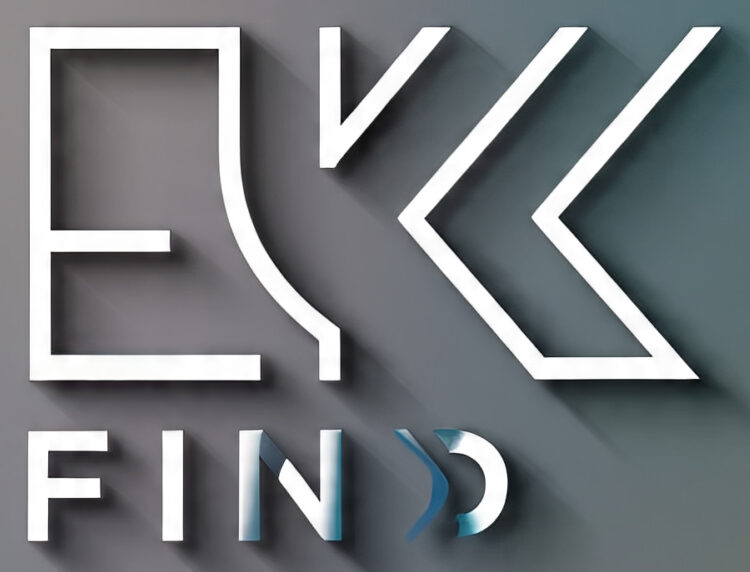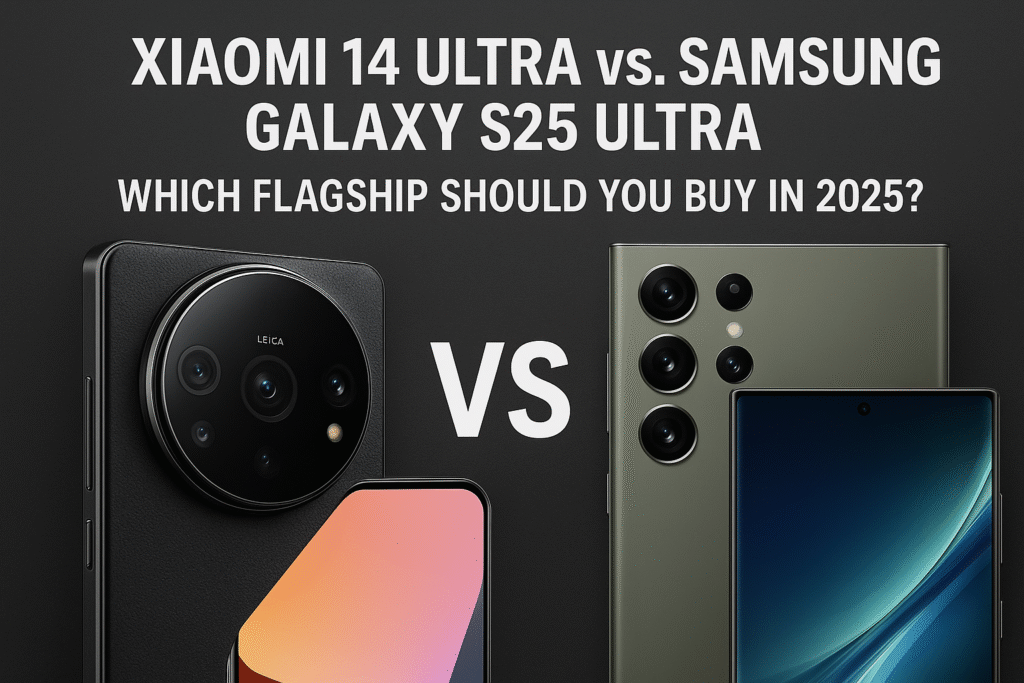Two giants riding the fee in 2025 are the Xiaomi 14 Ultra and the Samsung Galaxy S25 Ultra the top rate phone enterprise is more competitive than it’s been in years. Tech aficioners, photographers, game enthusiasts and experts all will find terrific attraction in both smartphones’ modern-day features, pinnacle-of- the- line era and arresting seems.
This certain assessment will take a look at both phones in severa critical areas layout, show, performance, camera, battery lifestyles, software program and cost for cash to help you pick out that’s the nice buy on your necessities.
Design and Build Quality
Both smartphones have a high-end feel in terms of design and construction, but they approach materials and style differently. Whereas Xiaomi goes toward a vibrant, photography-focused look, Samsung chooses elegant refinement.
Samsung Galaxy S25 Ultra
Samsung’s S25 Ultra includes on its subculture of excessive-cease creation excellence. Its advanced durability is ensured by using its Armor-grade metal structure and Corning Gorilla Armor 2 the front and rear. It feels fashionable within the hand due to the fact to its glossy shape and softly curved corners. It is rather practicable notwithstanding the big display because it weighs simply 218g, measures 162.8 x seventy 7.6 x 8.2 mm and has built-in pen compatibility for the S Pen.
Xiaomi 14 Ultra
Xiaomi brings a bold and slightly heavier approach with the 14 Ultra, offering 6M42 high-strength aluminum frame + Xiaomi Shield Glass + nano-tech vegan leather. It measures Dimensions 161.4 × 75.3 × 9.2 mm and weighs between 219.8g and 229.5g, depending on the version. The phone exudes a high-end camera-centric feel, appealing to photography lovers.
Winner: Tie — Samsung wins for sleekness and protection, while Xiaomi wins for luxurious build options.
Display Technology
Samsung Galaxy S25 Ultra
Samsung excels in display technology and the S25 Ultra is no exception. It has a Dynamic LTPO AMOLED 2X (19.5:9) 6.9-inch display with a resolution of 3120 x 1440 pixels (498 ppi), support for HDR10+ and a maximum brightness of 2600 nits. With an adaptive 120Hz refresh rate, the screen remains ultra-smooth and vibrant in any condition.
Xiaomi 14 Ultra
The Xiaomi 14 Ultra offers a 6.73-inch WQHD+ AMOLED (522 ppi) LTPO display, with a resolution of 1440 x 3200 pixels, Dolby Vision and a staggering 3000 nits peak brightness. It also supports a 120Hz refresh rate and high-frequency PWM dimming for eye comfort.
Winner: Xiaomi 14 Ultra — Higher brightness and Dolby Vision give Xiaomi the edge for media consumption.
Performance and Software
Samsung Galaxy S25 Ultra
Samsung uses the next-gen Qualcomm SM- 8750 AB Snapdragon 8 Elite chip, built on a 3nm process, Octa-core CPU 1× Cortex-X4 @ up to 4.47 GHz, 2× Cortex-X4 @ up to 4.16 GHz, 2× Cortex-A720 @ up to 3.38 GHz and 3× Cortex-A520 @ up to 2.29 GHz, Adreno 830 GPU. It delivers class-leading performance, especially for gaming, AI processing and multitasking. The S25 Ultra runs Android 15 with One UI 7 and Samsung guarantees 7 years of Android updates, offering unmatched longevity.
Xiaomi 14 Ultra
Xiaomi equips its flagship with the Qualcomm SM- 8650 AB Snapdragon 8 Gen 3 chipset (4nm), Octa-core CPU 1× Prime core: Cortex-X4 @ up to 3.3 GHz, 3× Performance cores Cortex-A720 @ up to 3.2 GHz, 2× Performance cores Cortex-A720 @ up to 3.0 GHz and 2× Efficiency cores Cortex-A520 @ up to 2.3 GHz, Adreno 750 GPU, which is slightly behind Samsung’s newer Elite version in raw benchmarks. It ships with Android 14 and HyperOS, Xiaomi’s new UI that improves performance and connectivity across Xiaomi devices. Xiaomi promises 4 years of major updates.
Winner: Samsung Galaxy S25 Ultra — Newer processor and longer software support make it a better long-term choice.
Camera Capabilities
With flagship-level camera structures designed for professional photographers, each telephones enhance the bar for mobile photography. Xiaomi, with Leica’s assistance, specializes in pro-grade photo, while Samsung prioritizes adaptability.
Samsung Galaxy S25 Ultra
Samsung doubles down on its camera game with:
- 200 MP wide, f/1.7, 1/1.3″, OIS
- 50 MP periscope telephoto (5×), f/3.4, OIS
- 10 MP telephoto (3×), f/2.4, OIS
- 50 MP Ultrawide, f/1.9
- 12MP front camera with 4K video support
With its exceptional detail dynamic range and low-light capabilities, this system is made for flexible photography.
Xiaomi 14 Ultra
Xiaomi’s photography system developed in partnership with Leica includes:
- 50 MP main, f/1.63–4.0 variable, 1″ sensor, OIS
- 50 MP 75 mm telephoto (3.2×), OIS
- 50 MP 120 mm periscope (5×), OIS
- 50 MP ultrawide, f/1.8
- 32MP front camera also with 4K support
Leica’s tuning offers expert color science, while Xiaomi’s reliable 50MP sensors provide uniform quality in all modes.
Winner: For dedicated photographers, the Xiaomi 14 Ultra has an advantage because to its cooperation with Leica and consistent sensor quality.
Battery Life and Charging
Both handsets use a 5,000 mAh cell with wired and wireless replenishment Xiaomi pushes for ultra-rapid top-ups, while Samsung opts for more tempered speeds to safeguard long-term battery health.
Samsung Galaxy S25 Ultra
- Battery: 5000 mAh
- Wired Charging: 45W
- Wireless Charging: 25W
- Reverse Charging: 4.5W
- Samsung prioritizes battery longevity and safety by maintaining a cautious yet safe approach to charging speeds
Xiaomi 14 Ultra
- Battery: 5000 mAh
Wired: 90 W (0 → 100% in ~33 min)
Wireless Charging: 80 W (0 → 100% in ~46 min)
Reverse Charging: 10W
Xiaomi leads the market with lightning-fast charging, going from 0 to 100% in less than 30 minutes.
Winner: Xiaomi 14 Ultra Significantly faster charging in both wired and wireless modes.
Price and Value for Money
Samsung’s flagship carries a top-tier price tag for cutting-edge tech, while Xiaomi undercuts it by several hundred dollars delivering almost the same hardware for far less.
Samsung Galaxy S25 Ultra
- US MSRP starts at $1,299.99 (256 GB); $1,419.99 (512 GB); $1,659.99 (1 TB)
- Availability: Late 2024 or early 2025
- Value: Premium features but comes at a premium price
Xiaomi 14 Ultra
- Global launch price ~$1,199–$1,299 for 16 GB/512 GB variants
Availability: Already released in early 2024
Value: Offers flagship-grade hardware at a significantly lower price
Winner: Xiaomi 14 Ultra — Offers almost everything Samsung does for a notably lower cost.
Other Features
Beyond the headline specs, both flagships pack every modern convenience from top-tier durability to bleeding-edge connectivity and expansive onboard storage.
IP Rating: Both devices offer IP68 water and dust resistance.
Connectivity: Wi-Fi 7, 5G, Bluetooth 5.3/5.4, GNSS, and sophisticated GPS are all supported by both phones.
Storage: Up to 1 TB of internal storage available on both.
Final Verdict: Which One Should You Buy?
Both the Xiaomi 14 Ultra and Samsung Galaxy S25 Ultra are phenomenal devices, packed with the latest innovations and features. However, your choice depends on your priorities.
Buy the Samsung Galaxy S25 Ultra if
- You want the latest Snapdragon 8 Elite
- You need long-term software support (7 years)
- You prefer Samsung’s UI ecosystem and built-in S Pen
- You want a device that balances power with a refined, polished design
Buy the Xiaomi 14 Ultra if
- You care about photography, especially Leica-tuned lenses
- You value ultra-fast charging and a superior media experience
- You want flagship features at a more affordable price
- You don’t mind a slightly heavier, more camera-centric design
Overall Recommendation: Xiaomi 14 Ultra for Value, Samsung S25 Ultra for Longevity
If getting the maximum bang to your dollar with always notable Leica-tuned pics throughout every lens and blazing-fast charging that can replenish your battery in underneath half of an hour is your primary priority, the Xiaomi 14 Ultra is certainly superior to its competitors.
On the other hand, if you value a device designed to stand the take a look at of time with the contemporary Snapdragon 8 Elite chipset, an integrated S Pen and a assured seven years of Android and security updates wrapped in Samsung’s polished One UI you’ll locate the Galaxy S25 Ultra properly well worth the top class.

